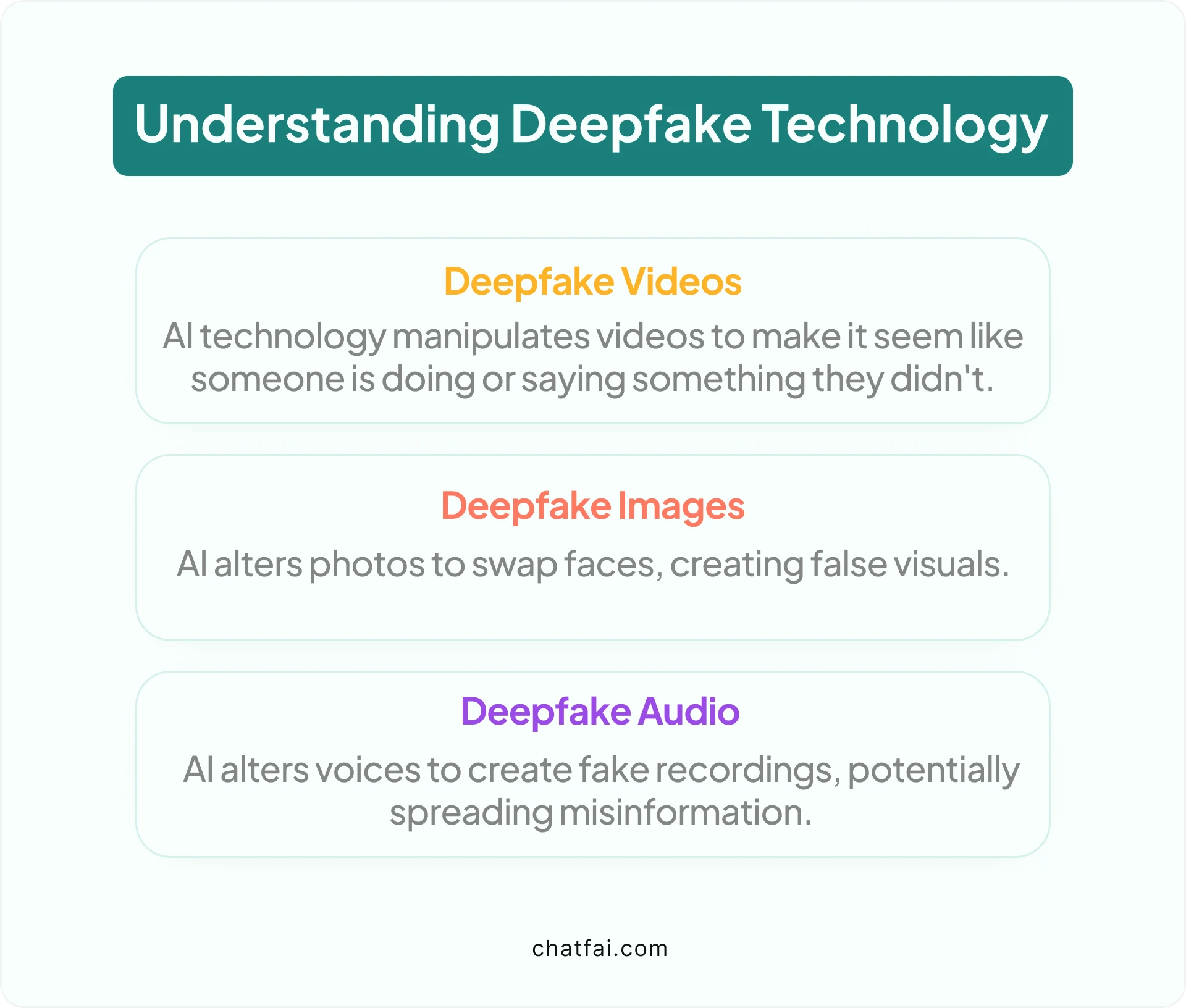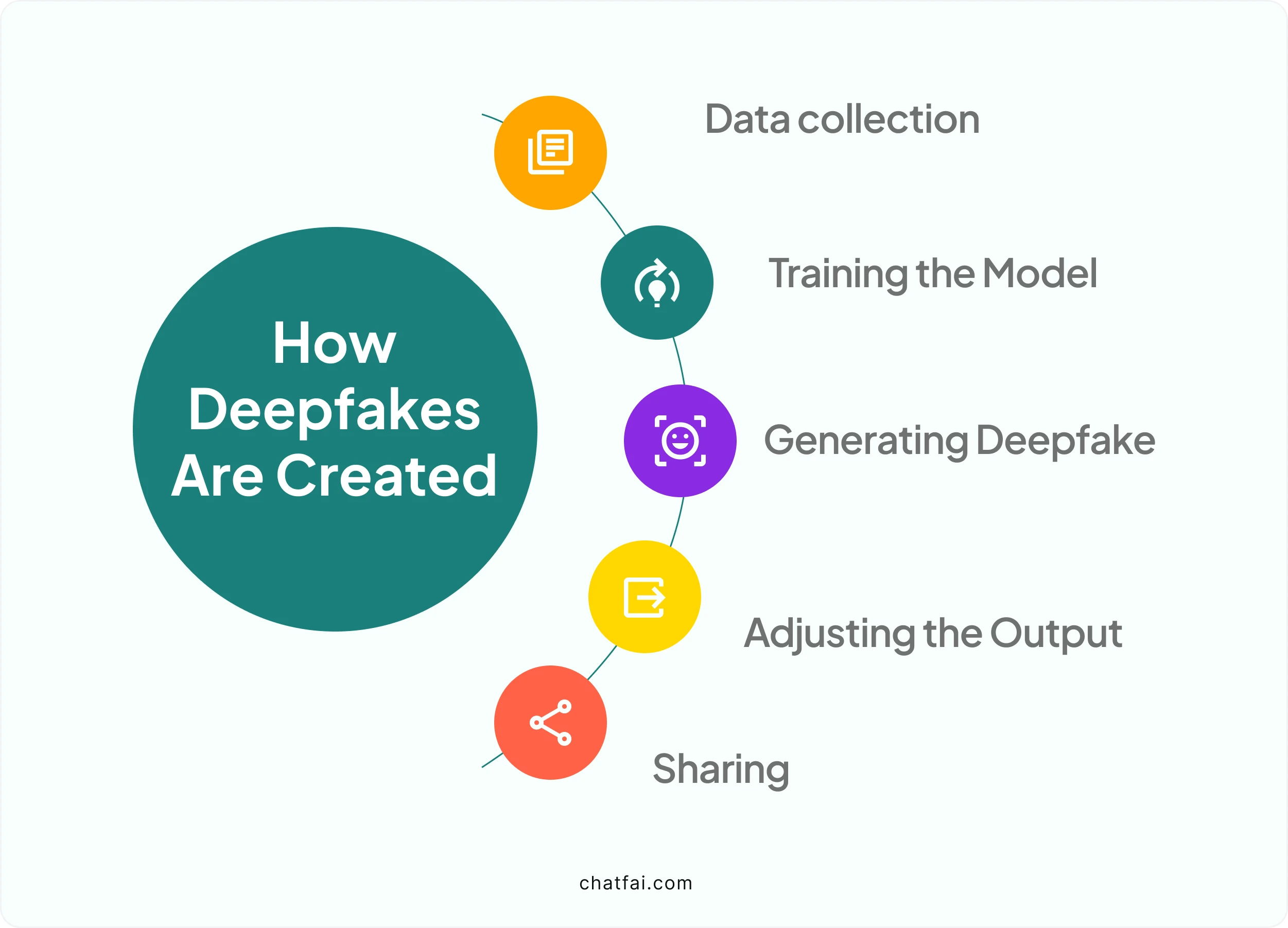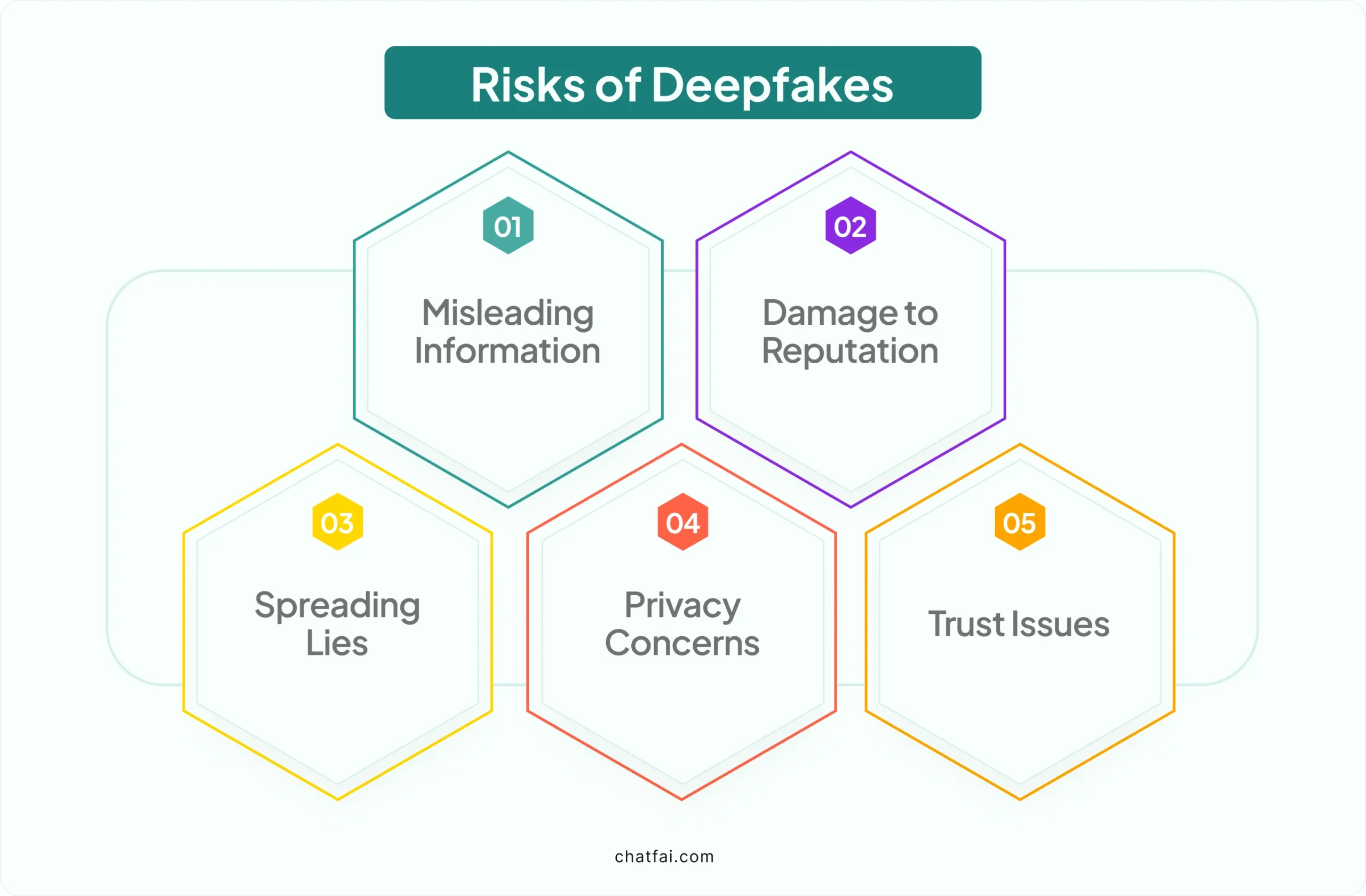Have you ever wondered how those adorable vintage characters from famous stories and video games are brought to life in the modern digital era? The same tech advancements that make these nostalgic comebacks possible also give rise to darker inventions like deepfakes.
Are you new to this idea?
Deepfakes are fake videos or audio made with AI that look real but aren’t. The important thing is to learn how to protect yourself from deepfake. This guide will do so.
You’ll learn how Deepfakes work, tools to detect them, and easy steps to prevent them. Knowing about Deepfakes helps you stay safe in a world where fake videos can trick people.
So, let’s learn something new!
Deepfake – All You Need to Know
Before learning how to protect yourself from deepfakes, let’s learn how deepfakes work. Deepfakes are videos or images created using artificial intelligence (AI) to make it look like someone said or did something they didn’t do. They’re like digital masks that can be put on someone’s face in a video.
People use deepfake technology to swap faces or manipulate voices to create convincing fake videos.
Sounds unbelievable.
Deepfakes can be used for fun, like putting your face on a famous actor’s body in a movie scene, but they can also spread misinformation or create fake news. This is why it’s important to know that not everything you see online is real. AI is changing everything around us, from entertainment games to chatting experiences.
Insider Hack: AI in entertainment will give you a quick idea about AI, and it’s mind-boggling working!
Understanding Deepfake Technology!

These three types of deepfakes—videos, images, and audio, are all examples of how AI technology can create convincing but fake content.
Head to the ChatFAI guide to learn how to make funny AI chat videos to prank your friends.
How Deepfakes are Created – Quick Guide

Now that you know what Deepfake is and how it works, let’s learn how a Deepfake image, video, or audio is created.
1. Data Collection
Deepfakes start with gathering many images or videos of the person you want to create a fake of. This could be celebrities, politicians, or anyone you have enough footage of.
2. Training a Model
A unique neural network program learns from these images and videos. It studies the person’s facial features, expressions, and skin tone.
3. Generating the Fake
Once the neural network is trained, you feed it new videos or images you want to manipulate. It uses what it learned to swap faces or alter expressions.
4. Refining the Output
The generated fake might look better initially, so you can refine it by adjusting it according to your needs.
Pro Tip: Learn more about refining images by reading this photo editing guide.
5. Sharing or Using
Finally, the Deepfake video or image can be shared online or used for various purposes. It is best to ask for that person’s permission.
It’s important to remember that Deepfakes can be entertaining but raise concerns about misinformation and privacy.
How to Prevent Deepfakes?
Preventing AI-generated Deepfakes is a big challenge because they use advanced technology to create fake videos or audio that look real.

To stop them, AI tools can be used to detect fakes and digital fingerprints to verify video authenticity. Education on spotting deepfakes and using strong passwords can help us protect ourselves from the harms of deepfakes.
Risks of Deepfakes
Deepfakes are vidoes or images that look real but are made using AI technology. They can be dangerous for these few reasons.

AI in entertainment is making significant changes, but there are also risks. Moreover, these risks show why knowing how to protect yourself from Deepfake is important.
Now, let’s learn how to protect yourself from Deepfake or what strategies you can follow.
9 Top Strategies on How To Protect Yourself From Deepfake

After learning about the risks and dangers of Deepfakes, the next step is to learn how to protect yourself from Deepfake.
1. Verify Sources
Always check if the information or media comes from a trustworthy and reliable source. Only trust everything you see or hear online if you confirm.
2. Question Unusual Requests
If someone asks you for personal information or to do something strange, like sending money unexpectedly, be suspicious. Verify the request through other means.
3. Enable Two-Factor Authentication
Use 2FA for your important accounts (like email and social media). This adds an extra layer of security even if someone gets your password. Try to use strong passwords for your accounts.
4. Be Careful with Personal Information
Avoid sharing too much personal info online, especially details that could be used to track you or give access to your accounts.
5. Update Privacy Settings
Regularly review and update the privacy settings on your social media and other online accounts to control who can see your information.
6. Use Strong Passwords
Create strong, unique passwords for each of your accounts. Avoid using easily guessable information like your birthday or your name.
7. Stay Informed About Deepfakes
Learn more about deepfakes and stay updated on technology news and developments. This awareness can help you recognize potential threats.
8. Verify Identity in Communication
If you receive an odd message or call, verify the sender’s identity through other means before responding or taking action.
9. Educate Others
Spread awareness among friends and family about deepfakes and how to protect themselves. This collective knowledge can help everyone stay safer online.
Following these strategies can reduce the risks associated with deepfakes. Deepfakes have the potential to affect people. Some real-world examples of deep fake scams have changed people’s lives.
Consider using AI therapy as a helpful way to cope with challenges; it’s affordable and accessible.
Areas Affected by Deepfake
Deepfake technology has the potential to impact various areas of society and has been a growing concern due to its ability to create realistic images, audio, and video. Furthermore, some areas affected by deep fake technology include:
- Politics
- Business
- Media and Journalism
- Entertainment
- Security
- Privacy
- Legal and Ethical Concerns
ChatFAI – The Ultimate Medium of Entertainment
If you love playing around AI characters and want to avoid the complications of deepfake technology, then ChatFAI is your perfect entertainment solution. Let’s focus on something fun.
Imagine you want to chat with any character you like—well, ChatFAI character creation has you covered. You can style your character however you want, give it a voice, adjust its visibility, and even follow your favorite characters.
And there’s more!
You can export videos to prank your friends, and if someone signs up using your code, you earn credits. Plus, it’s multilingual, so you can chat in any language you prefer.
Here’s a quick overview of ChatFAI’s pricing tiers:
Monthly plans
- Free: $0 per month
- Primary: $9 per month
- Premium: $29 per month
- Deluxe: $59 per month
Yearly plans
- Free: $0 per month
- Basic: $8.25 per month – $99 per year
- Premium: $24.17 per month-$290 per year
- Deluxe: $49.17 per month-$590 per year
Here’s a ChatFAI guide if you want to learn more about the features of this tool.
Final Verdict
So, now you know how to protect yourself from Deepfake. It is all about staying sharp and savvy online. Know what’s real and not, use tools to identify deepfakes, and keep your info safe with strong passwords and smart settings.
Stay curious, stay cautious!
FAQs
Q: How can we defend against deepfakes?
To defend against deepfakes, these methods can be used:
- Detection tools
- Authentication methods
- Policy and regulations
- Educate others about deep fake technology
Q: How do you protect yourself from AI?
You can use strong passwords, double-check your identity for odd calls or messages, and update your privacy settings.
Q: Are there possible solutions to avoid deepfakes misuse?
To prevent misuse of deepfakes:
- Use technology to spot fake videos.
- Add markers to real videos.
- Teach people to recognize fake content.
- Make rules to control deep fake creation
These steps can help stop problems caused by misleading videos or images.
Q: Are deepfakes a security threat?
Yes, deepfakes are a security problem because they make fake videos that look real. These can cause scams for money, invade privacy by making fake videos of people, and change how people think about things.